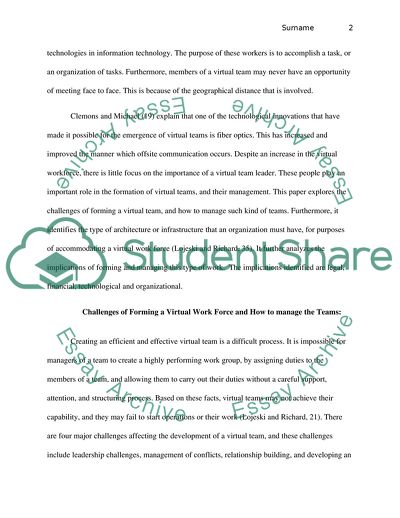Cite this document
(Managing the Mobile Workforce and Virtual Teams Essay Example | Topics and Well Written Essays - 2250 words - 1, n.d.)
Managing the Mobile Workforce and Virtual Teams Essay Example | Topics and Well Written Essays - 2250 words - 1. https://studentshare.org/information-technology/1859785-virtual-teams
Managing the Mobile Workforce and Virtual Teams Essay Example | Topics and Well Written Essays - 2250 words - 1. https://studentshare.org/information-technology/1859785-virtual-teams
(Managing the Mobile Workforce and Virtual Teams Essay Example | Topics and Well Written Essays - 2250 Words - 1)
Managing the Mobile Workforce and Virtual Teams Essay Example | Topics and Well Written Essays - 2250 Words - 1. https://studentshare.org/information-technology/1859785-virtual-teams.
Managing the Mobile Workforce and Virtual Teams Essay Example | Topics and Well Written Essays - 2250 Words - 1. https://studentshare.org/information-technology/1859785-virtual-teams.
“Managing the Mobile Workforce and Virtual Teams Essay Example | Topics and Well Written Essays - 2250 Words - 1”. https://studentshare.org/information-technology/1859785-virtual-teams.


